Seer Medical
Diagnostic Software Discovery
Seer Medical is a med-tech startup specialising in epilepsy diagnosis. Their clinical team use a cloud-based data viewer to review and report on patient data. With ambitious plans to expand globally, the company recognised the need to improve the overall user experience to offer a more competitive product. To achieve this, we undertook a comprehensive user experience (UX) discovery process to understand their target user's needs and expectations.
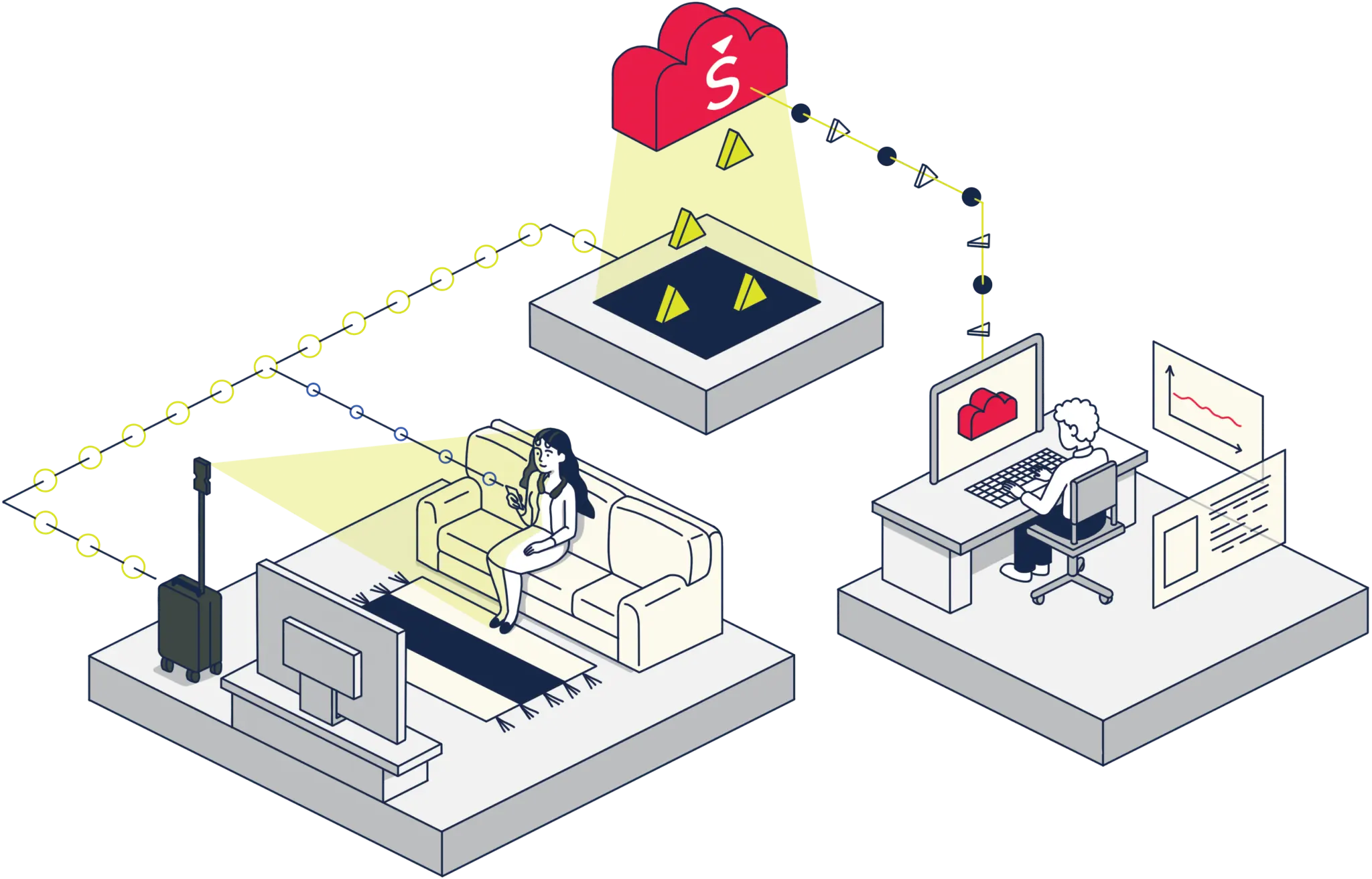
Senior Product Designer
Jan 2021
-
Jan 2022
- Product Owner
- Tech Lead
- Front-End Developer
- Back-End Developer
- Quality Assuance
- Discovery
- User Research
- User Interviews
- Survey Design
- Synthesis
- UX Reports
Objectives
The objective of the discovery process was to identify the key user needs, pain points, and expectations for diagnostic software - more specifically, a cloud-based data viewing and reporting platform.
Discovery process
We started with user research to understand the needs, behaviours, and frustrations of the users. Extensive user interviews were conducted with neurologists, EEG technicians, and other platform users, to gather insights into their daily workflows and challenges. We additionally sent out surveys to gather both qualitative and quantitative data.
We analysed the data collected from the interviews and surveys. We found that users were struggling with fragmented patient data, inconsistent performance, and the lack of a user-friendly interface for report generation.
We utilised the System Usability Scale (SUS) to quantify usability. Our users rated the platform a 69 (this roughly translates to a C+). We implemented advanced analytics into the application, allowing us to calculate finely-grained performance attributes e.g. we found median load time on paging was 298ms.
Based on the data uncovered during the interviews and surveys, we created user personas representing the platform's typical users. These personas helped us understand the users' needs, goals, and pain points better.
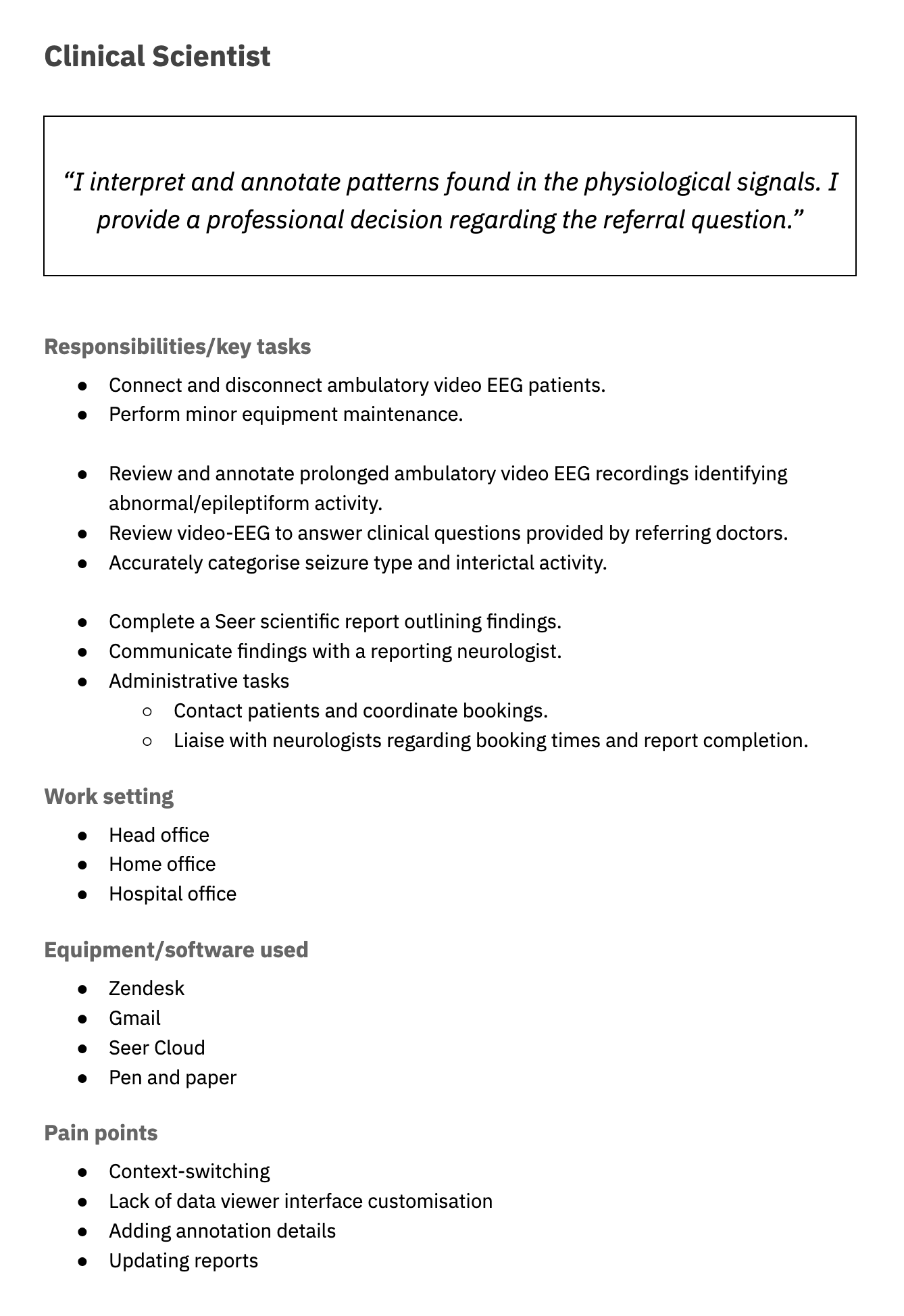
We mapped out the user journey to visualise how users interact with the platform, from logging in to generating a report. This helped us identify the touch-points where users were facing difficulties.
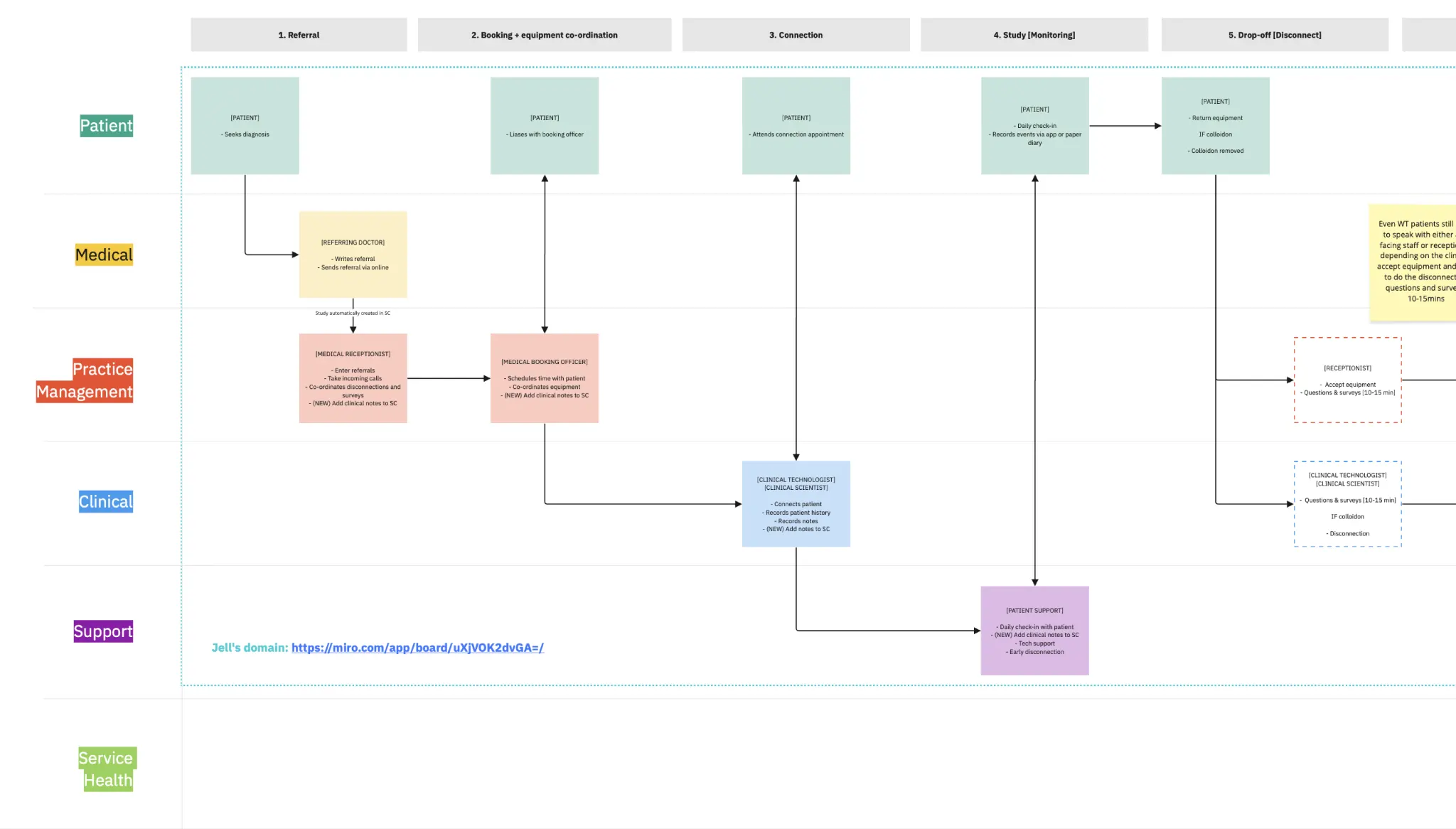
We conducted task analysis to better understand and document the steps that users must take to complete tasks using the platform. This process helped us identify our users' goals, actions, and challenges. Documenting these steps helped to revealing inefficiencies, unnecessary steps, and opportunities for improvement.
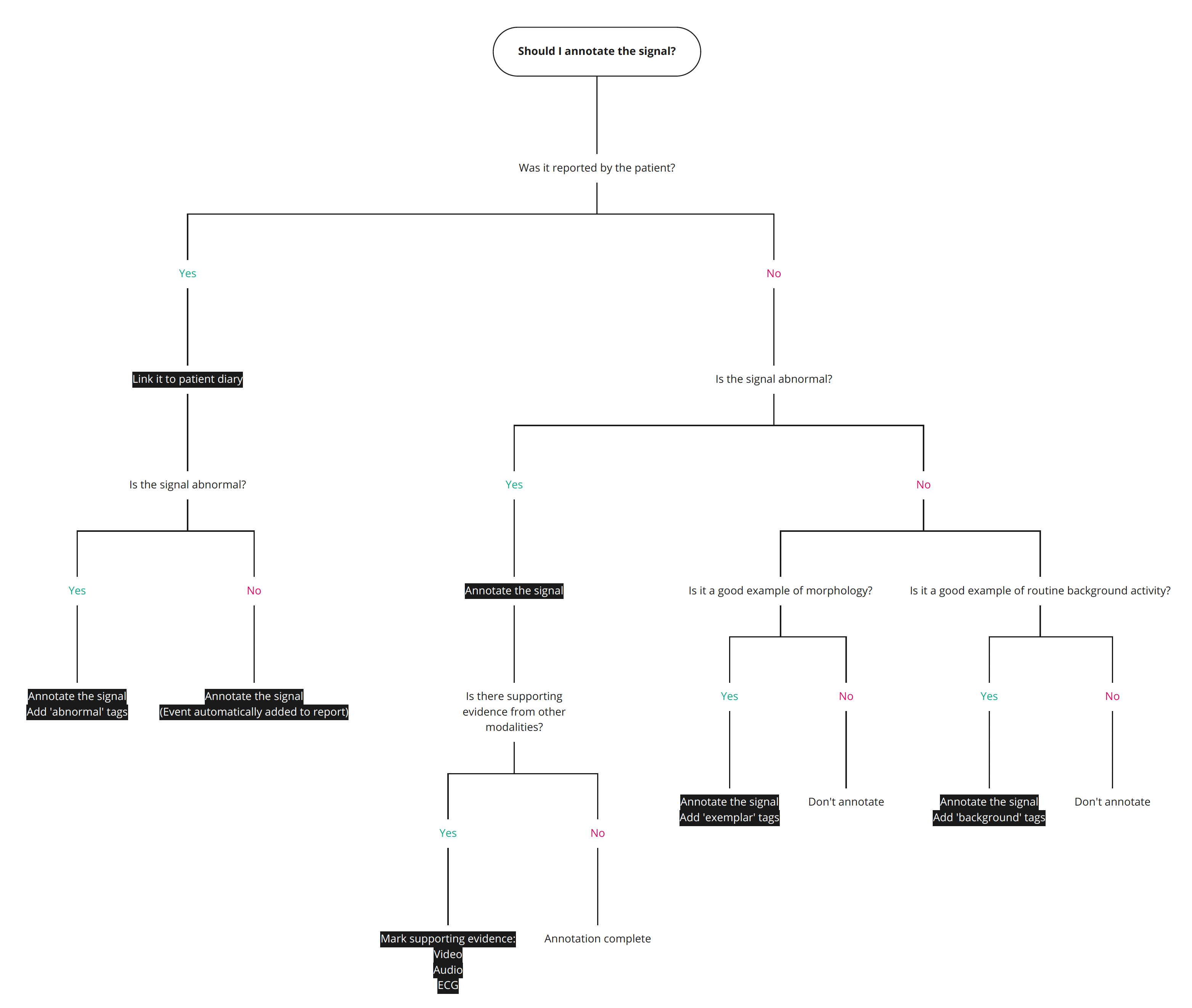
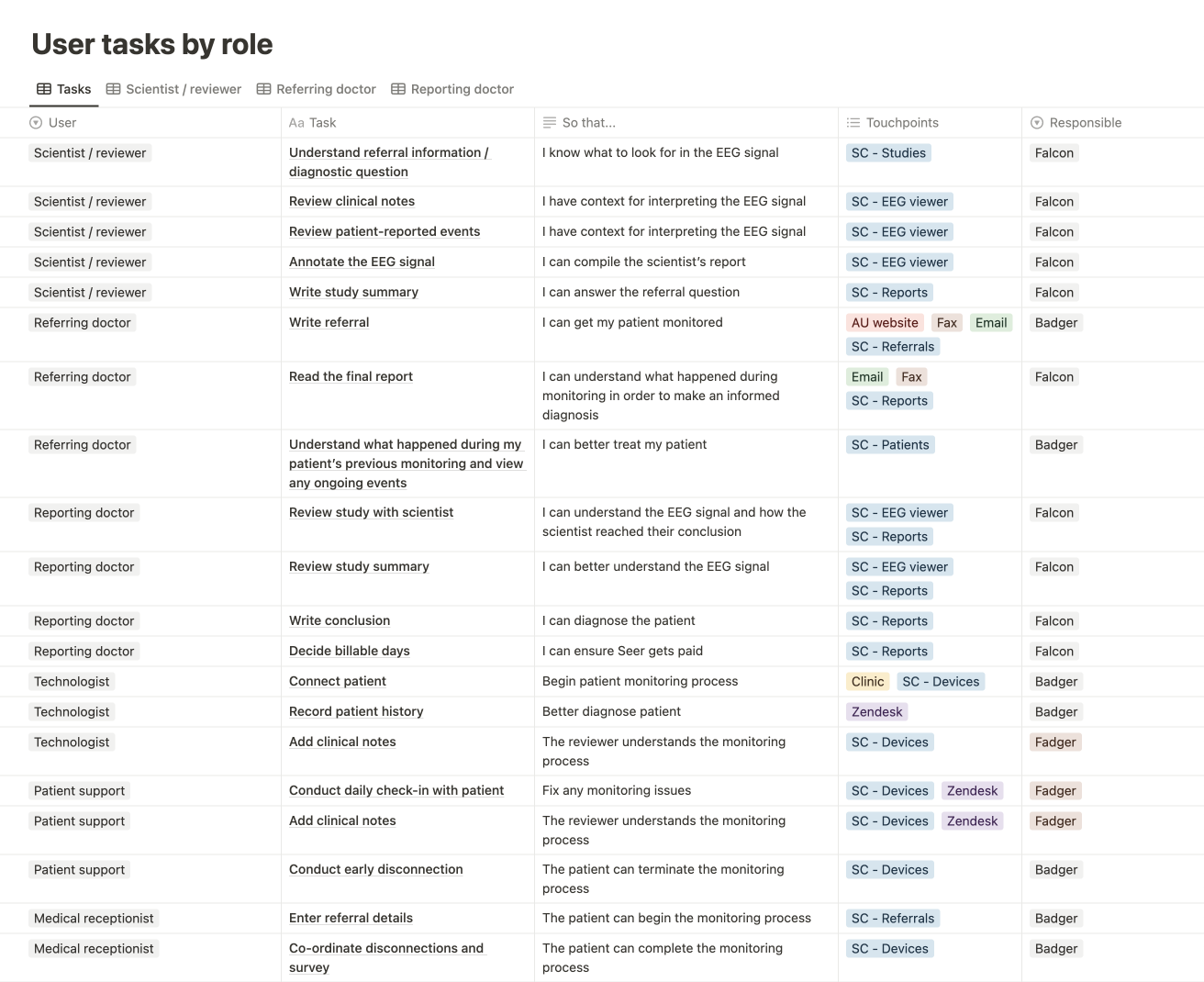
We also conducted a competitor analysis to understand the industry standards and identify features that could enhance our platform's user experience. This analysis provided insights into the strengths and weaknesses of existing EEG platforms and helped identify potential opportunities and risks.
Findings
The discovery process revealed that users require a platform that is intuitive, customisable, and performant.
1
Customisation
The platform lacked customisation features. As a clinicians preferred visual presentation of the data is highly influenced by the institution where they were trained, the ability to customising the interface to match individual preference is highly important.
2
Performance
Users encountered inconsistent performance when quickly paging data when using cloud-based software. Reviewers scan a single page of EEG data exceptionally quickly, so any delays in performance lead to user frustration.
3
Flexibility
Users were comfortable with the use of cloud-based software due to its flexibility in allowing EEG review outside of traditional clinical contexts e.g. reviewing at home offices or while travelling.
4
Keyboard shortcuts
A highly valued feature of competitor software is the ability to map common commands to keyboard shortcuts. These are highly trained professionals using professional software. They invest the time to learn shortcuts knowing it will save them time in the long run.
5
Context-switching
The ability to aggregate patient data so that it can easily be accessed while reviewing is an important step in reducing context-switching, thereby reducing unnecessary cognitive load.
6
Aggregate data
The report generation process was time-consuming and complex. It frustrated users by requiring them to return to the reviewing screens for extra information. The reporting process can be expedited by bringing this data forward.
Conclusion
The UX discovery process played a crucial role in shaping the development of the data viewer. The insights gained from the process ensured that the platform was designed with the users' needs at the forefront, thereby increasing the likelihood of its acceptance and success in the market.